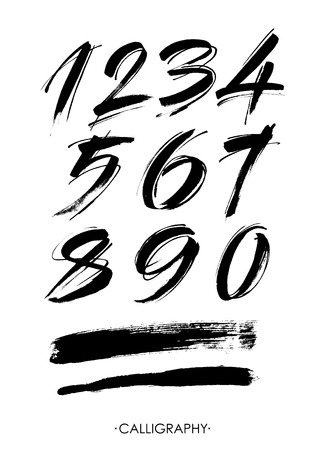Introduction to Rune Casting in the UK
Rune casting, a practice deeply rooted in the ancient traditions of Northern Europe, holds a special place within the tapestry of British spiritual and cultural heritage. While runes themselves originated with the Germanic tribes, their influence and use have long permeated the British Isles, blending seamlessly with local customs over centuries. In the United Kingdom, rune casting has evolved from its early beginnings as a tool for divination and guidance to become a cherished method for self-reflection and insight. Today, many practitioners across England, Scotland, Wales, and Northern Ireland continue to honour these age-old traditions, weaving rune wisdom into their daily lives and spiritual practices. The enduring fascination with runes speaks not only to their mystical allure but also to their ability to adapt and thrive within contemporary British culture, making them as relevant now as they were in the days of our ancestors.
Traditional Rune Sets: Materials and Craftsmanship
In the United Kingdom, the crafting of rune sets is an art that embodies respect for tradition and a reverence for the natural world. Runes, as used in British divinatory practices, are more than mere symbols; they are vessels for ancestral wisdom, carefully fashioned using materials steeped in meaning and local heritage.
Materials Chosen with Intention
The selection of materials is a foundational step in rune set creation. Traditional British rune sets are most commonly crafted from native woods, river stones, or antler—each material carrying its own symbolism and energetic qualities. For instance, yew wood is favoured for its association with longevity and transformation, while oak represents strength and steadfastness. Below is a comparison of popular materials:
| Material | Symbolic Meaning | Common Usage in the UK |
|---|---|---|
| Oak | Strength, endurance | Very common for wooden rune sets |
| Yew | Transformation, protection | Highly prized but rarer due to conservation laws |
| River Stone | Connection to water spirits, grounding | Popular in regions near rivers and coasts |
| Antler/Bone | Animal wisdom, cycles of life | Used by practitioners honouring animal totems |
Design: Honouring Ancestral Aesthetics
The design of traditional UK rune sets often reflects regional motifs or personal connections to the land. Artisans may hand-carve each rune symbol—known as a ‘futhark’—with tools passed down through generations, ensuring that every mark is imbued with intention. The runes are sometimes stained using natural dyes such as elderberry or oak gall ink, lending an earthy authenticity cherished among British practitioners.
Preparation: Ritual and Respect
The careful preparation of runes is regarded as a sacred process. Craftspeople typically cleanse their materials under running water or by smudging with locally sourced herbs like sage or mugwort. Many artisans will consecrate the finished runes under the full moon or within a stone circle, invoking blessings for clarity and truth. This ritualistic approach ensures that each set becomes not just a tool but a trusted companion on one’s spiritual journey.

3. Commonly Practised Casting Methods
Across the United Kingdom, rune casting has long been cherished as a means of seeking wisdom and guidance. While the runes themselves echo ancient origins, the methods of casting practised within British traditions are grounded in both practicality and respect for the old ways. Here, we explore some of the most time-honoured approaches favoured by practitioners from Cornwall to the Highlands.
The Three-Rune Spread
Perhaps the most prevalent method is the ‘three-rune spread’, cherished for its clarity and simplicity. In this approach, three runes are drawn one after another and laid out from left to right. Each rune holds a specific place: the first speaks to past influences or foundations, the second illuminates present circumstances, and the third points towards future possibilities or outcomes. This spread is particularly popular in British rune reading circles for its straightforward narrative, making it ideal for those seeking quick yet meaningful insight.
The Five-Rune Cross
Another beloved method within British rune lore is the ‘five-rune cross’. This involves drawing five runes and arranging them in a cross formation—one at each compass point and one at the centre. The central rune represents the heart of the matter or question, while the others offer guidance regarding challenges (left), strengths (right), underlying factors (below), and possible outcomes (above). Many find this layout valuable for exploring complex situations with multiple facets, mirroring the layered nature of British storytelling traditions.
The Full Cast
For those who prefer a more immersive experience, the ‘full cast’ method remains a cornerstone of traditional practice in the UK. Here, all runes are gently cast onto a cloth or wooden surface—often using a handwoven pouch native to local craft traditions. Runes that land face up are interpreted, with special attention paid to their position relative to each other and any patterns they may form. The full cast is seen as embracing the element of chance and fate, qualities deeply woven into British folklore. It requires a practiced eye but rewards with nuanced, holistic readings that capture both detail and destiny.
Honouring Local Customs
British rune readers often enhance these methods by incorporating regional customs—such as casting on an oak table in England or upon heather in Scotland—to deepen connection with place and heritage. Whether performed in solitude or shared among friends on a misty moor, these methods exemplify how rune casting continues to thrive across Britain: rooted in tradition yet ever evolving.
4. Interpreting Runes: British Symbolism and Context
When it comes to interpreting runes, practitioners across the United Kingdom do more than simply translate ancient symbols—they breathe life into each reading by weaving in the unique threads of British folklore, language, and local customs. This distinctly British approach enriches rune casting, grounding its insights in the wisdom and traditions of the land.
The Influence of Folklore on Rune Meanings
British rune readers often draw upon centuries-old tales and legends to add depth to their interpretations. For example, the presence of a particular rune may be seen through the lens of Arthurian legend, Celtic myths, or local superstitions. Each region—be it Cornwall, Yorkshire, or the Scottish Highlands—brings its own flavour of stories that colour how runes are understood and applied.
Examples of Local Symbolism
| Rune | Traditional Meaning | British Folkloric Interpretation |
|---|---|---|
| Algiz (ᛉ) | Protection | Linked to the image of the stag, revered in Celtic tales as a guardian of sacred groves |
| Ehwaz (ᛖ) | Movement/Change | Associated with journeys across moorlands or fens, echoing migratory patterns in British wildlife lore |
| Berkana (ᛒ) | Growth/Fertility | Tied to May Day celebrations and the Green Man, reflecting rebirth and renewal in rural communities |
The Role of Language and Dialect
Language is a living tapestry in Britain, with regional dialects shaping how messages from the runes are articulated. A rune reader from Yorkshire might use local idioms or proverbs when explaining a casting, while someone from Wales could incorporate Welsh phrases or poetic forms. This not only makes each reading feel personal but also honours the linguistic heritage of the area.
Incorporating Customs and Rituals
Cultural rituals further enrich rune readings. Some practitioners might cast runes during seasonal festivals such as Beltane or Samhain, aligning interpretations with community traditions. Others may integrate elements like tea leaf reading or incorporate charms passed down through generations, blending runic insight with longstanding British practices.
This intricate interplay between ancient symbols and living tradition ensures that rune casting in the UK remains both rooted and relevant—offering guidance that feels intimately connected to place, people, and history.
5. Ethics and Etiquette in British Rune Casting
In the venerable tradition of rune casting throughout the United Kingdom, ethics and etiquette form the backbone of every reading. The practices observed are steeped in time-honoured values, reflecting a profound respect for both the runes themselves and those who seek their guidance. At the heart of British rune casting lies the principle of confidentiality; what is revealed within a reading is held in strict confidence, ensuring a safe and trusting environment for all participants.
It is customary for the rune caster to approach each session with humility and reverence. The runes are regarded not merely as tools, but as sacred symbols carrying ancient wisdom. Practitioners in the UK often begin by cleansing their space—sometimes with local herbs such as sage or heather—and grounding themselves before inviting their clients to participate. This ritual underscores the seriousness with which readings are undertaken, setting a tone of mutual respect and intention.
Another key aspect of British etiquette involves obtaining explicit consent before proceeding with any reading. Whether in a public gathering at a village fete or a private consultation in one’s home, it is considered poor form to cast runes for someone without their clear permission. This practice honours personal boundaries and aligns with broader British cultural values of politeness and respect for individual privacy.
During the reading itself, practitioners are encouraged to interpret the runes with honesty but also with sensitivity. There is an emphasis on offering insight rather than prediction, guiding seekers to reflect thoughtfully upon their own situations. In this way, the rune caster serves more as a wise companion than an infallible oracle, fostering an atmosphere where empowerment and self-discovery take precedence over fate or fortune-telling.
Finally, gratitude is customarily expressed at the conclusion of each session—both towards the runes for their guidance and towards the seeker for their openness. A simple gesture such as returning the runes respectfully to their pouch or uttering words of thanks embodies the spirit of reciprocity that characterises traditional British rune casting. These enduring customs ensure that each reading remains an act rooted in integrity, dignity, and genuine care.
6. Contemporary Rune Community in the UK
The modern rune community in the United Kingdom is both vibrant and inclusive, reflecting a deep respect for tradition while embracing new interpretations. Across the country, local groups gather regularly to share knowledge, cast runes together, and foster a sense of camaraderie among enthusiasts. These gatherings often take place in historic venues, cosy community centres, or even peaceful outdoor settings, allowing members to connect not only with each other but also with the natural world that is so central to rune lore.
Local Groups and Gatherings
Many towns and cities host rune study circles or pagan societies where individuals interested in Norse traditions and rune casting are warmly welcomed. These groups offer a safe space for newcomers to learn the basics and for more seasoned practitioners to refine their skills. In London, Edinburgh, and Manchester, you will find established circles meeting monthly to discuss techniques, share personal experiences, and conduct group readings using traditional methods passed down through generations.
Workshops and Educational Opportunities
For those wishing to deepen their understanding, numerous workshops are available throughout the year. These sessions may focus on historical background, symbolism of each rune, or advanced casting layouts unique to British practice. Renowned teachers—many with decades of experience—offer courses ranging from introductory weekends to intensive masterclasses. Universities with strong folklore departments occasionally host public lectures or short courses exploring runes within the wider context of British esoteric heritage.
Annual Festivals and Special Events
The UK rune community comes together at larger festivals such as Beltane Fire Festival in Scotland or Pagan Pride events across England. Here, rune readings are often featured alongside other traditional crafts. Such events serve as both celebration and education, providing opportunities for hands-on learning and forging lasting friendships within the community.
Online Communities
In today’s digital age, many enthusiasts also connect via online forums and social media groups dedicated to British rune traditions. These virtual spaces allow for continuous learning, sharing of resources, and support for those unable to attend physical gatherings.
Together, these diverse opportunities ensure that the art of rune casting remains alive and well in the UK—rooted in centuries-old customs yet continually evolving through communal exploration and shared wisdom.


